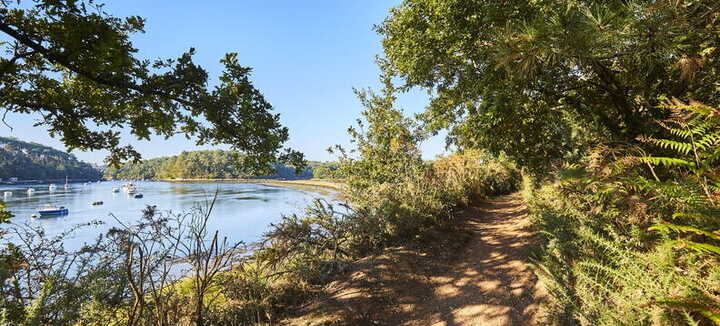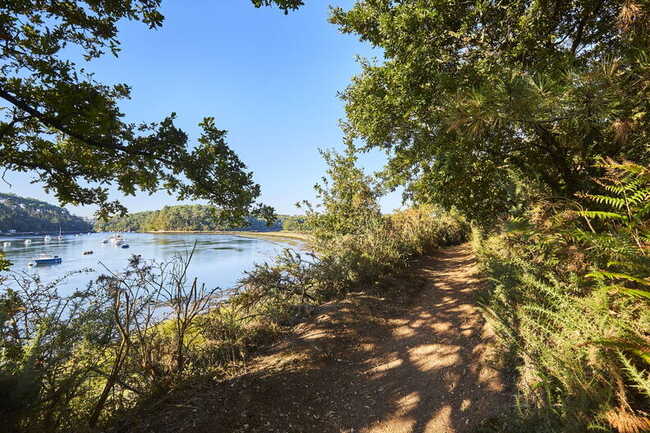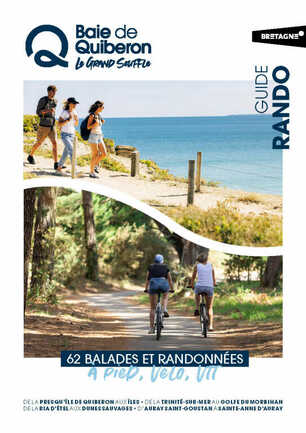
Pluneret - Vallon du Léran
Ruelle du Four Mériadec
56400 Pluneret
56400 Pluneret
Features of the route
Difficulty
Easy
Length
01:15:00
Distance
5km
Ruelle du Four Mériadec
56400 Pluneret
56400 Pluneret
Level of difficulty: Easy
The countryside and villages of Mériadec are criss-crossed by sunken lanes and the River Léran. Saint Mériadec was very popular in Brittany and across the Atlantic as early as the 5th century.
Departure point : From Mériadec village square, cross the D19 and take rue Yves de Pont Sal (C10) at the corner of the bakery.
1- Continue for 400 m, then turn right onto a sunken track.
2- At the intersection, cross the road, then turn left and continue up to the entrance to the Mériadec stadium. Take the track in front of you and follow the undergrowth path along the Léran river. The Vallon du Léran is home to a number of small heritage features, including a wash-house, a calvary and several springs that bear witness to the importance of this area in earlier times.
3- At the end of the valley, take the wide track to the heart of the village of Guern Boulard. Turn right onto the road. At the intersection with the D19, cross over the pedestrian crossing, turn left, continue for 150 m and turn right at Kerhouarn. This village is home to a number of pretty Breton thatched cottages and longères.
4- After 250 m, turn right onto the Voie Verte Sainte Anne/Vannes. At the end of the sunken road, opposite the public school entrance, turn left (nearby: "Voie Verte" information panel).
5- At the intersection, turn right to return to the center of Mériadec. At the crossroads with rue Parfait Pobéguin (a painter from Elven), continue straight ahead for 50 m, then turn right into the pretty alleyway (rue du four) that leads to the Mériadec church square. Mériadec (Bishop of Vannes in the 5th century) was very popular in Brittany, where several chapels are dedicated to him. Such was his reputation that the Celts of Wales also worshipped him at this time. The village, crossed by the important Vannes-Quimper Roman road, was undoubtedly already a stopover in Roman times. The lords of Coët-Sal ensured the village's continued existence, establishing one of the most important horse fairs in Brittany.
The countryside and villages of Mériadec are criss-crossed by sunken lanes and the River Léran. Saint Mériadec was very popular in Brittany and across the Atlantic as early as the 5th century.
Departure point : From Mériadec village square, cross the D19 and take rue Yves de Pont Sal (C10) at the corner of the bakery.
1- Continue for 400 m, then turn right onto a sunken track.
2- At the intersection, cross the road, then turn left and continue up to the entrance to the Mériadec stadium. Take the track in front of you and follow the undergrowth path along the Léran river. The Vallon du Léran is home to a number of small heritage features, including a wash-house, a calvary and several springs that bear witness to the importance of this area in earlier times.
3- At the end of the valley, take the wide track to the heart of the village of Guern Boulard. Turn right onto the road. At the intersection with the D19, cross over the pedestrian crossing, turn left, continue for 150 m and turn right at Kerhouarn. This village is home to a number of pretty Breton thatched cottages and longères.
4- After 250 m, turn right onto the Voie Verte Sainte Anne/Vannes. At the end of the sunken road, opposite the public school entrance, turn left (nearby: "Voie Verte" information panel).
5- At the intersection, turn right to return to the center of Mériadec. At the crossroads with rue Parfait Pobéguin (a painter from Elven), continue straight ahead for 50 m, then turn right into the pretty alleyway (rue du four) that leads to the Mériadec church square. Mériadec (Bishop of Vannes in the 5th century) was very popular in Brittany, where several chapels are dedicated to him. Such was his reputation that the Celts of Wales also worshipped him at this time. The village, crossed by the important Vannes-Quimper Roman road, was undoubtedly already a stopover in Roman times. The lords of Coët-Sal ensured the village's continued existence, establishing one of the most important horse fairs in Brittany.


